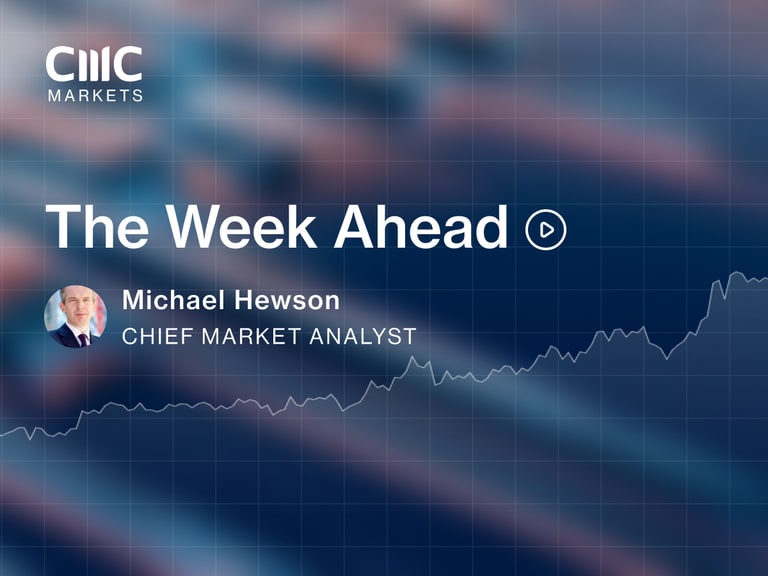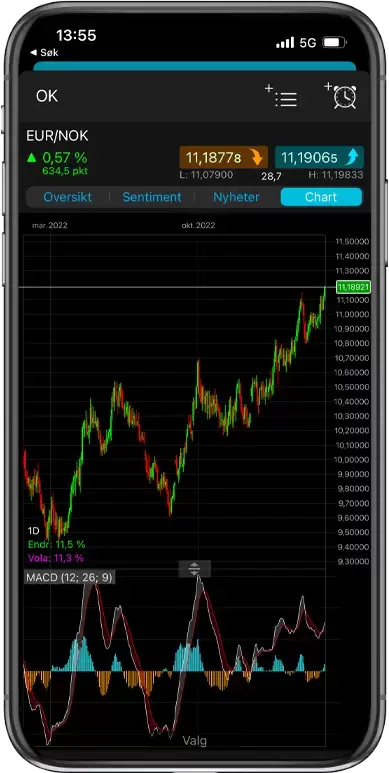Interest rates are top of the macroeconomic agenda again this week, with key rate decisions set to be made by the US Federal Reserve, the Bank of England and the Bank of Japan. We also preview results announcements from struggling cinema chain Cineworld, cruise operator Carnival, and B&Q owner Kingfisher.
OUR TOP THREE EVENTS FOR 19-23 SEPTEMBER:
Wednesday – US Federal Reserve interest rate decision
US inflation fell less than expected in August, according to data released by the Bureau of Labor Statistics on Tuesday, sending markets lower as investors braced themselves for an aggressive reaction from the Federal Reserve. The consumer price index (CPI) rose 8.3% in the year to August, easing from 8.5% in July but missing economists’ forecasts for a fall to 8.1%.
Ordinarily, falling inflation might lead Fed policymakers to rethink their stance on interest rates. But Fed chair Jay Powell made it clear in his speech in Jackson Hole, Wyoming, last month that the central bank will be sticking to its guns. Highlighting his determination to raise rates in order to drive down inflation, Powell said that the Fed “must keep at it until the job is done”.
Most economists are therefore expecting a third consecutive 0.75 percentage point rate hike in the coming week, a move that would lift the fed funds rate to a target range of 3% to 3.25%. Various Fed members have indicated that they expect to see the rate hit at least 3.5% by the end of 2022, implying that further increases are still to come at this year’s two remaining Fed meetings after September.
The softer option of a half-point rate rise this month now appears to be off the table. Some forecasters are suggesting that a full percentage point increase could be on the cards, but such a move risks spooking markets. The Fed needs to show that it is in control. A 0.75-point rate rise and a signal that further substantial rate rises are coming would achieve that objective.
Thursday – Bank of England interest rate decision
Having delayed its decision by a week following the death of the Queen, the Bank of England is likely to raise interest rates by at least 0.5 percentage points on Thursday in its latest bid to tame rapid price growth. The Bank may even feel emboldened to raise the base rate by 0.75 points to 2.5% after prime minister Liz Truss announced a £150bn package last week to cap average annual household energy bills at £2,500 for the next two years, a policy which should support the UK economy. Indeed, current pricing suggests that markets are leaning towards a 0.75-point rate rise. With the Fed set to raise rates by that margin on Wednesday, the Bank may choose to match it to help keep the pound above the $1.1000 level.
This month’s rate hike may cap inflation’s upside potential, preventing the price growth of 18-22% that Citigroup and Goldman Sachs predicted, but the Bank faces a huge challenge in bringing inflation down to its target rate of 2%. Although headline CPI fell to 9.9% in August, down from a 40-year high of 10.1% in July, core inflation – which excludes volatile items like food and energy – grew to 6.3% in August from 6.2% in July, suggesting that inflation may be becoming more embedded.
While the US Federal Reserve and the European Central Bank have been vocal about the need for aggressive rate hikes to combat inflation, the Bank of England has been quiet on the issue. It’s hard to tell whether this is by accident or design, but one could understand the Bank wanting to keep a low profile. During the course of the recent Conservative party leadership battle, which saw Truss installed as the UK’s new prime minister on 6 September, Britain’s central bank found itself at the centre of a political storm over its mandate to deliver price stability.
It’s no secret in financial circles that the Bank of England has struggled to deal with the UK’s economic problems since the 2008 financial crisis. Charged with accusations of one-dimensional groupthink and an unwillingness to acknowledge its mistakes, the Bank has recently been criticised by politicians for being too slow to raise interest rates. Similar criticisms have been directed at central banks in other countries. Curiously, the financial markets that have spent the last 14 years criticising central banks are now panicking amid talk that central banks’ mandates could change. Arguably, the problem isn’t so much the mandates, but central banks’ inability to deliver on them.
Thursday – Bank of Japan interest rate decision
The Bank of Japan’s stance on monetary policy this year has made it a global outlier and contributed to the yen’s decline to a 24-year low against the US dollar. While other central banks have been tightening monetary policy, Japan’s central bank has kept its key short-term interest rate in negative territory at -0.1%.
With the US raising interest rates, making US treasuries and other dollar-denominated assets more appealing to investors, it’s hardly surprising that the yen has weakened. This weakness fuelled speculation that the Bank of Japan might intervene. On Wednesday it did just that, conducting a rate check – a sign that it is becoming concerned at the speed of the yen’s decline. The rate check, widely interpreted as preparation for a currency intervention, comes after policymakers issued statements that they were assessing recent currency moves.
The Bank of Japan’s rate check heightens the importance of its upcoming meeting. So, what can we expect? Headline inflation in Japan is still well below the levels we’re seeing in Europe and the US. That said, Japan’s annual inflation rate climbed to 2.6% in July, up from 2.4% in June. For the Bank of Japan even to consider raising interest rates inflation would probably need to top 3%. An increase on yields may be more likely, as policymakers have indicated that they might be prepared to raise the cap on 10-year government bond yields from 0.25%.
However, the reality is that the yen will continue to decline unless or until the Bank of Japan announces a policy shift, or the Fed indicates it might be close to a pivot. As neither development appears likely at the moment, Japan’s currency could weaken further to ¥150 against the US dollar.
KEY EVENTS OVERVIEW (19-23 SEPTEMBER):
Monday 19 September
No major announcements
Tuesday 20 September
Germany flash PMI (September)
We continued to see weakness in purchasing managers’ indices (PMI) for August. In Germany, business activity remained in contraction territory last month, with PMI readings of 49.1 for manufacturing and 47.7 for services. Will we see an improvement here on Tuesday, or might sentiment worsen?
In France, economic activity appears slightly more resilient. Its manufacturing PMI reading for August ticked up to 50.6, while the services reading rose to 51.2. This may partly be because the French government has protected French consumers from the worst effects of the spike in energy prices, albeit at a huge cost as it had to bail out EDF Energy.
UK economic activity appeared to take a hit last month, as the manufacturing PMI reading slipped to 47.3, down from 52.1 a month earlier. Meanwhile, services PMI slipped to 50.9, down from 52.6 in July, as the steep rise in energy prices and low consumer confidence weighed on consumer spending and broader economic activity.
Kingfisher half-year results
Shares in B&Q owner Kingfisher have traded sideways since the company posted its Q1 trading update back in May. Earlier this month the shares briefly hit their lowest level since July 2020, but recovered after the UK government announced its energy price package.
Expectations for Q1 earnings were quite low given the tough comparatives of a year ago. Although like-for-like sales fell 5.8% year-on-year to £3.25bn, this was much better than the predicted fall of 8.1%. Outperformance was partly due to a 50% uptick in sales in Poland. Compared to pre-pandemic Q1 2019, sales were up 16.2%.
Full-year guidance was left unchanged, with bosses saying that they expected adjusted pre-tax profits to be in the region of £770m. The FTSE 100-listed retailer also announced a £300m share buyback, the first tranche of which was returned to shareholders in July.
Wednesday 21 September
US Federal Reserve interest rate decision
See top three events, above
Thursday 22 September
Bank of England interest rate decision
See top three events, above
Bank of Japan interest rate decision
See top three events, above
Cineworld half-year results
What to make of the train wreck that is the Cineworld share price? In August Cineworld shares – which were worth well in excess of 300p as recently as in 2019 – dropped below 2p after the cinema chain announced that recent admission levels had fallen short of expectations. Bosses said that they may have to take action to bolster the company’s balance sheet and restructure its finances. This turned out to be code for possible bankruptcy. Last week the company filed for Chapter 11 bankruptcy protection in the US, where more than two-thirds of its cinemas are located. Chapter 11 protection is a court-supervised restructuring process that buys struggling companies time to reduce their debts.
Cineworld blames its predicament on a limited film slate. With few major releases likely to put extra bums on seats this month and next, that situation is expected to continue until November, potentially impacting the company’s liquidity position in the near term. However, this reasoning rang a little hollow given that its sector peer, AMC Entertainment, posted better-than-expected quarterly results last month, citing record admissions. This raises questions over the competence of Cineworld’s management. Just over a year ago, Cineworld bosses courted controversy with a pay and bonus scheme that suggested a skewed sense of priorities, given the company’s problems.
The upcoming half-year update is likely to give an indication of exactly how bad things are, and which bits of the business are likely to be sold to raise funds as the company looks to cut its huge debts.
JD Sports Fashion half-year results
It’s not been a great year for the JD Sports share price, down more than 40% year-to-date at 126p. In June, the sportswear retailer finally got around to publishing its full-year results, which showed that revenue was in line with expectations at £8.56bn, while profits before tax more than doubled to a record £654.7m. The delayed release of the numbers was due to a number of factors, not least the impact of the forced sale of sportswear chain Footasylum.
For the year to the end of January 2023, the company said it expected pre-tax profits to be at a similar level to the previous year.
In July, the company hired a replacement for executive chairman Peter Cowgill, appointing former Morrisons chairman Andy Higginson. That same month, JD Sports said that total sales for the first five months of the year were up 5% on last year.
Despite recent weakness, the shares appear to be finding support at around the 100p level, with the government’s recently announced energy package helping to shore up the retail sector in recent days.
Darden Restaurants Q1 results
When Darden Restaurants released its Q4 results back in June, the shares were trading close to an 18-month low, as rising commodity prices and collapsing consumer confidence raised investor concerns that footfall could plummet as customers prioritised spending on essentials over meals out. Somewhat surprisingly, the owner of the Olive Garden and Longhorn Steakhouse chains managed to confound the pessimism as fourth-quarter revenues beat expectations, coming in at $2.6bn Profits slipped back to $2.24 a share, but that was better than forecast.
The decision to raise prices by 3% also helped. Same-store sales rose 11.7%, helped by growth at fine dining business The Capital Grille, where sales rebounded to 2019 levels.
Darden’s outlook for the new fiscal year is for revenue of $10.2bn to $10.4bn, assuming an inflation rate of 6%. However, profits guidance of $7.40 and $8 a share fell short of analyst expectations. The company also announced a $1bn buyback programme. Profits for Q1 are expected to come in at $1.56 a share.
Friday 23 September
UK mini Budget
New chancellor of the exchequer Kwasi Kwarteng will deliver a tax-cutting mini Budget, setting out the economic policies of the new Truss-led Conservative government. The so-called fiscal event is likely to provide more details on the recently announced energy price plan, as well as unveiling other measures aimed at resetting the economic agenda over the next two years of this parliament.
Kwarteng is set to reverse this year’s increase in national insurance contributions, and may also ditch plans to increase corporation tax next April. These tax hikes were heavily criticised when they were first proposed, so cancelling them should be an easy win. The bigger question is whether Kwarteng goes further. Business owners may be hoping that he takes action to protect companies and not just consumers from higher energy bills. A failure to act decisively on this front could prompt a tsunami of unemployment in the coming months, so the stakes are high.
Carnival Q3 results
The cruise industry, like most areas of the travel sector, has had a difficult two years. Carnival’s annual revenue collapsed from $20.8bn in pre-pandemic 2019 to $5.6bn in 2020, before a further decline to $1.9bn in 2021. While the company is on course to beat those last two tallies this year, it will be some time before normal service is resumed.
For Q2, the company posted a bigger-than-expected loss of $1.9bn, as revenue fell short at $2.4bn. Though disappointing, the numbers were an improvement on Q1. Moreover, occupancy rates rose to 69%, up from 54% in Q1, as booking volumes almost doubled. Carnival said it still expects to post a net loss in Q3 and for the full year, but occupancy rates are expected to return to historical norms next year.
Against this improving outlook, it was a surprise to learn in July that Carnival had raised a further $1bn in share capital to shore up its financial position. This news sent the shares sharply lower, though they soon recovered as investors took the view that management was at least taking action to keep the company afloat. Losses for Q3 are expected to come in at $0.21 a share.
INDEX DIVIDEND SCHEDULE
Dividend payments from an index's constituent shares can affect your trading account. View this week's index dividend schedule.
SELECTED COMPANY RESULTS
| MONDAY 19 SEPTEMBER | RESULTS |
| AutoZone (US) | Q4 |
| City of London Investment Group (UK) | Full-year |
| Craneware (UK) | Full-year |
| Haleon (UK) | Half-year |
| Hostmore (UK) | Half-year |
| TUESDAY 20 SEPTEMBER | RESULTS |
| Alliance Pharma (UK) | Half-year |
| Anexo Group (UK) | Half-year |
| Jadestone Energy (UK) | Q2 |
| Kingfisher (UK) | Half-year |
| Stitch Fix (US) | Q4 |
| Xaar (UK) | Half-year |
| WEDNESDAY 21 SEPTEMBER | RESULTS |
| City Pub Group (UK) | Half-year |
| Frontier Developments (UK) | Full-year |
| Galliford Try Holdings (UK) | Full-year |
| General Mills (US) | Q1 |
| HB Fuller (US) | Q3 |
| KB Home (US) | Q3 |
| Pendragon (UK) | Half-year |
| Petershill Partners (UK) | Half-year |
| Steelcase (US) | Q2 |
| Supermarket Income REIT (UK) | Full-year |
| TEN Entertainment Group (UK) | Half-year |
| THURSDAY 22 SEPTEMBER | RESULTS |
| AAR (US) | Q1 |
| CalAmp (US) | Q2 |
| Ceres Power Holdings (UK) | Half-year |
| Cineworld Group (UK) | Half-year |
| Costco Wholesale (US) | Q4 |
| CVS Group (UK) | Full-year |
| Darden Restaurants (US) | Q1 |
| FactSet Research Systems (US) | Q4 |
| JD Sports Fashion (UK) | Half-year |
| Learning Technologies Group (UK) | Half-year |
| PZ Cussons (UK) | Full-year |
| SafeStyle UK (UK) | Half-year |
| Wilmington (UK) | Full-year |
| FRIDAY 23 SEPTEMBER | RESULTS |
| Carnival Corp (US) | Q3 |
| Smiths Group (UK) | Full-year |
Company announcements are subject to change. All the events listed above were correct at the time of writing.
CMC Markets er en ‘execution-only service’ leverandør. Dette materialet (uansett om det uttaler seg om meninger eller ikke) er kun til generell informasjon, og tar ikke hensyn til dine personlige forhold eller mål. Ingenting i dette materialet er (eller bør anses å være) økonomiske, investeringer eller andre råd som avhengighet bør plasseres på. Ingen mening gitt i materialet utgjør en anbefaling fra CMC Markets eller forfatteren om at en bestemt investering, sikkerhet, transaksjon eller investeringsstrategi. Denne informasjonen er ikke utarbeidet i samsvar med regelverket for investeringsanalyser. Selv om vi ikke uttrykkelig er forhindret fra å opptre før vi har gitt dette innholdet, prøver vi ikke å dra nytte av det før det blir formidlet.








